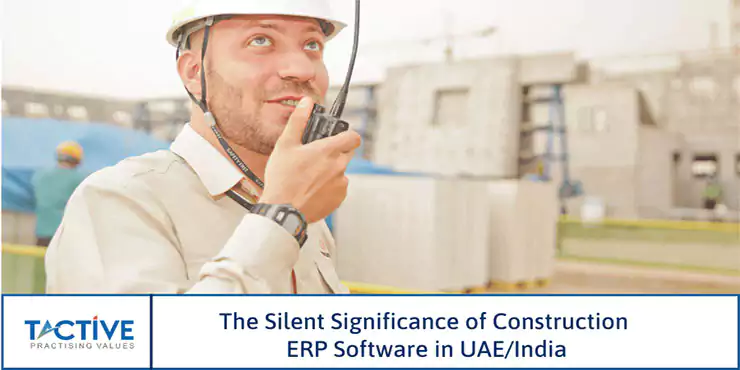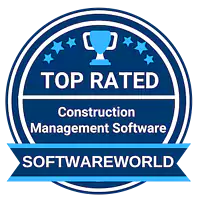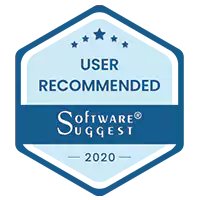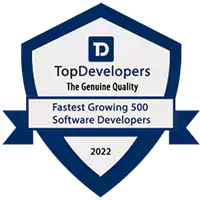Introduction
The construction industry has a prominent role in shaping the overall economy of the world. As per a Mckinsey article, 14% of the global GDP is contributed by the construction industry. This generates tons of employment opportunities across the globe, more so in developing countries like India.
Despite its enormous contributions, the construction industry recorded relatively weak progress between 2002 to 2018. Due to the reluctance in adopting new technologies and advanced digital tools, the industry’s value creation has been low and so has been the rate of recovery post-2008 financial crisis. Multiple reports suggest that industries that invested in tech-support had little to no trouble in getting up on their feet and meeting their desired ROI (Return on Investment).
In other industries like agriculture, manufacturing, and mining, by contrast, productivity increased significantly. What is the reason for the slow down of the construction industry?
Is there a well-defined road-map for the future trajectory of the construction industry? Let’s find out.
The need for a Construction Technology
Technology is the prime driver of business growth and a catalyst for production efficiency in the 21st century. It can be accommodated into almost all the business activities for increasing the efficiency of that business life-cycle and the construction processes are no exception. As per an article on ToI, 95% of the construction companies report schedule and cost overruns as the single most daunting problem in achieving their end goals.
There have been many instances where Tactive has stepped in to revive the construction prospectus of its customers with the Construction ERP Software to digitize and automate the entire work-flow cycle, after which, the customers have given positive feedback on timely completion of projects, within the scheduled budget.
Construction Management Software helps its customers cut time in half in key areas like Tendering & Estimation, Budgeting & Scheduling, Procurement, Managing Inventory and Equipment, Finance, HR & Payroll, etc… There are many layers of construction work-flow processes/activities. When administered manually by the ‘sight and direct’ method, the project may lose out on control and coordination for optimal efficiency while also consuming more than required resources, manpower, and time.
Materials and equipment management consumes a little more than 50% of the entire project’s budget. Having a BI (business intelligence) incorporated Construction Material Management system that digitizes the functional usage of materials, allocation, inter-site transfers, log entries, and equipment mobility entries, preventive maintenance schedules, etc can help the contractor in saving these valuable resources from exploitation. This, in turn, results in extra savings in the overall fiscal corpus which can be invested in other projects. Example: A good customer of Tactive Construction ERP Solutions reported saving around 23,000 liters of diesel per annum in their field offices across the Bangalore city region.
Most of our customers have credited Tactive for increasing transparency in billing, and other money-related services. When a construction company is digitized and automated to generate prompt digital reports, the chances for discrepancies to creep into the picture is very low. No data is left unturned or missed. All the inputs are digitally recorded and documented in reports which can be easily accessed in the user-friendly and customizable dashboards.
Speaking of leaving no data unregistered, the modern-day construction ERP software comes with the provision to integrate with existing technologies in practice in the client’s base. These technologies may range from Primavera, MS, Tally, Sage, etc. to deliver the last mile benefit of achieving synergy and functional coordination within the organization’s work culture.
Modern builders are expressing their willingness to explore the benefits offered by smart technologies like IoT (Internet of Things) which is the establishment of a communication link between the software and the material/physical world. This in a way is like Apple’s Siri, only a little more advanced to be experienced in the real world. Having a baseline technology like an ERP to integrate with and support the functions of IoT provides double extra efficiency.
Construction is one of the top 10 sectors where the wastage is quite high compared to its counterparts in automobiles, manufacturing, etc.., the need for the incorporation of Lean Principles becomes inevitable for long term sustenance. A penny saved is a penny earned.
A present-day reliable construction ERP is multi-dimensional in a way that it can be used as a launching pad for all the other high-end applications like BIM, Drones, Trench technologies, etc. The use of these advanced construction technologies like the BIM assists the contractor in the design, planning, and execution phase of the project through 3D simulation models that can also be used for renovative construction activities. Technologies like drones give an eye in the air to increase the reach of the contractor where his/her legs and ground vehicles can not reach.
In short, the construction technologies help foresee the future by making nitty-gritty calculations that can not be achieved just by the human intellect alone. This mitigates the surprises and adversaries that may otherwise arise in conventional man-hours intensive construction practices.
The future of the Construction Industry
Several factors are to be considered when dealing with the future and the most prominent factor that repeatedly pops up is cost control. As per another article by Mckinsey, even the best performers were highly cautious of cost management. Cost management can be looked after by Contractor Accounting Software (or) Construction ERP Software, in their built-in or stand-alone Finance & Accounts, Inventory, and Equipment Modules.
In terms of cost control and streamlining in wages, salary, compensation, allowances, perk & benefits, incentives, reimbursements, penalties, due, insurance, safety expenses, etc will be taken care of by the HR & Payroll Module. Likewise, all the modules are assigned to look after certain roles that are conventionally assigned to the manual workforce. The technological takeover of the roles and responsibilities increases the quality of work and reduces error and chaos in the work structure.
A Construction ERP from the research and experience perspective of Tactive can complete complex tasks in less than half the time it takes for a manual workforce to do the same. All at the same time reducing the error and increasing transparency. For instance, the billing process across the various operations of the construction company leaves room for calculative and minor arithmetic errors that may snowball into a much larger figure in the long run. Not to mention the high volume of man-hours and paper trails involved in the billing process was not automated in a digital platform. This is where the role of construction technology plays a vital role.
Speaking of the vitality of construction technology for the modern builder, it has come to light that about 7% of the world’s working-age population is employed by construction and allied activities. There isn’t better proof for growth and opportunity in the construction arena in the foreseeable future. The growth potential attracts competition. To ward off the competition and to remain afloat in the game, contractors must opt for a foolproof strategy.
Bottom line…
Any business or service takes place only inside a physical structure we call the building, home, warehouse, factory, etc… This makes the construction industry a silent backbone for the sustenance of other economic activities in the country. Other key component sectors of the economy include the manufacturing industries, automobiles, transportation, etc all of which have shown a significant leap in their ROI (return on investment) within a decade from going digital and automating their work-flow process. It’s time that the construction industry strives to attain the level of digitization that is required to meet future demands.
World Economic Forum’s report on Digitizing Construction states that the human population with the requirement of housing and shelter is growing at a rapid pace of 200,000 people per year across the globe. More than 40% – 50% of this demand lies in the Asian subcontinent especially in developing countries like India. In Dubai, the government has long back changed the vision for the future and started embracing infrastructure development to boost up revenue in the form of tourism and FDI inflow. This will boost the requirement of Construction ERP Software in Dubai and other parts of the middle east to meet the expanding demand for quality infrastructure.
Tactive has always been at the forefront of propagating the benefits of digitizing the construction sector for over 2 decades. It is through technological inclusion that the largely unorganized and non-standardized practices, methodology, procedures can be streamlined for seamless management to scale up the profits. Resisting change is no longer an option for contractors looking to grow in their business.
For a free DEMO of Tactive Construction ERP and Workforce Management Tools.










